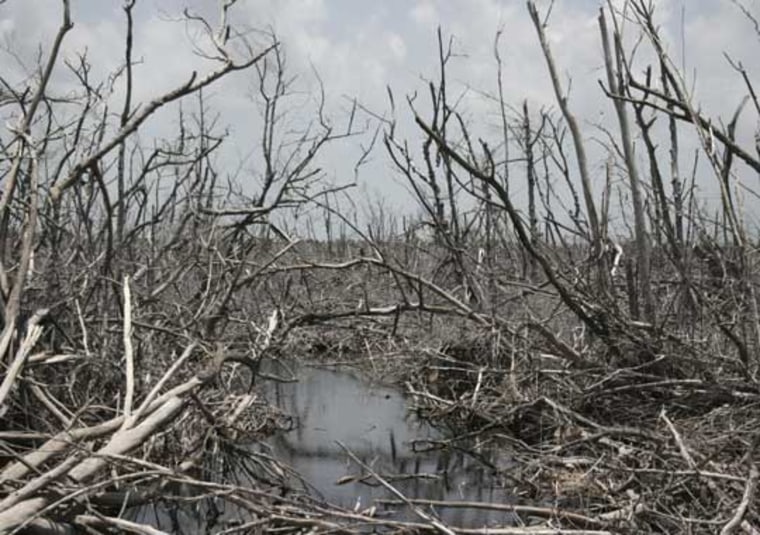In the wake of the world's worst mass extinction 250 million years ago, life on Earth was nearly nonexistent. All across the supercontinent Pangea, once lush forests lay in ruins, the corpses of trees poking like matchsticks into the poisoned air.
In their place fungus ruled the land, according to a new study. It feasted on defunct wood, spreading across the planet in an orgy of decay.
The finding offers evidence against an alternative theory that rampant algae fed off the dead forests and puts to rest an old idea that an asteroid impact may have had a hand in the massive destruction.
"This [fungus] was a disaster species, something that perhaps enjoyed the extinction a little more than it should," Mark Sephton of Imperial College London in the United Kingdom said. "It proliferated all over the globe."
Sephton and a team of researchers studied rocks containing microscopic fossils from the extinction. They were trying to settle a decades-old debate: Were the remains in fact the fungus Reduviasporonites, or algae, as had previously been thought?
Carbon isotopes within the fossils indicated the organisms ate wood while they were alive, a strong sign that they were fungus.
"What we're looking at is a lot of plant die-offs concentrated in time," Peter Roopnarine of the California Academy of Sciences in San Francisco said."We're most likely looking at episodes of intense greenhouse warming, and chemical changes in the atmosphere that made it unsuitable for the huge, massive forests living at the time."
The team's results were published yesterday in the journal Geology.
The finding has important implications for the Permian-Triassic extinction, which wiped out a large majority of life on the planet. If the fossils had turned out to be algae, it would've suggested a soggy, swampy world dominated by gradual changes in climate and the environment.
But in this ancient murder mystery, fungus fits. Modern forests ravaged by acid rain are covered in the stuff, and scientists generally believe that the titanic eruptions of the Siberian Traps, a large volcanic province in Russia, choked the atmosphere and blighted the land with acid rains. The harsh conditions lasted for hundreds of thousands of years.
And it further puts to rest the idea that an asteroid impact caused the destruction.
"Fungal presence starts to increase just before the main extinction; it's not as sudden as the Cretaceous-Tertiary extinction [which killed the dinosaurs]." Sephton said. "The idea of a declining ecosystem doesn't exactly fit will with an extraterrestrial impact event."
